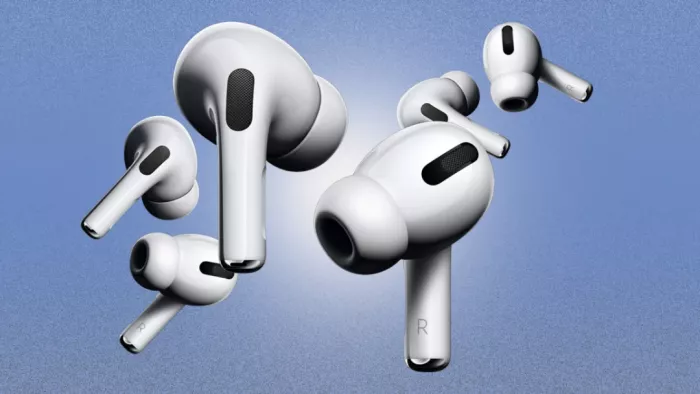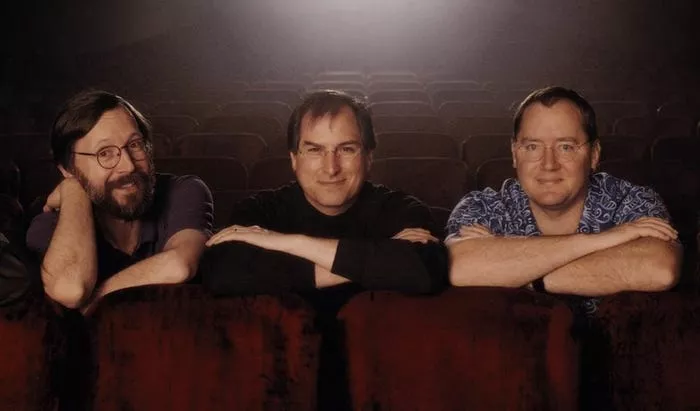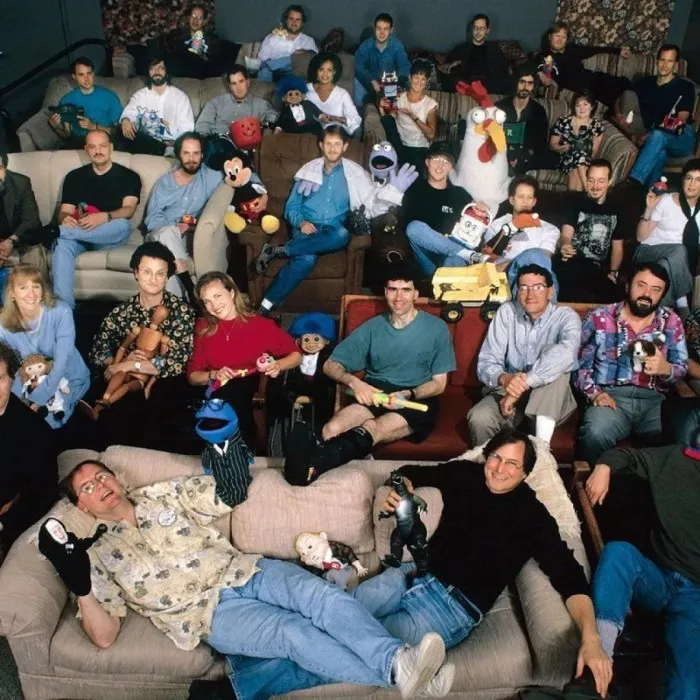The following article is from fast company by Chris Deaver, a former Apple HR executive. For years, people have been curious about how Apple came to this day. How did it achieve that innovation and create those amazing great products. But in fact, few people know how many difficulties Apple faced before reaching its current height.
As Michelangelo said, "if people knew how hard I worked to improve my skills, it would not be as amazing as it seems at first sight."
01
Apple's secrecy culture
When I joined apple as an HR business partner in 2015, I was amazed at the technical depth of its talented engineers. It seems that there are no problems they can't solve. In a magical way, apple brings together the best talents in the world to create the best products in the world.
But in addition to focusing on innovation, there is also a basic premise of work: confidentiality. Apple cherishes the value of retaining "surprise and joy" for customers, that is, no one (or even most employees) can predict how crazy and great a new product will be even on the day of product release.
However, this culture of confidentiality also has some disadvantages, such as hoarding of key information, ignoring other people's opinions and infighting. As a new HR business partner, I am often involved in these disputes. The complaint from one party is usually "the other team is unwilling to share".
I hear many new employees, even some very talented employees, ask the same key question: "how can I work like this? If I can only share information with specific people, how can I know who it is and when? I don't want to be fired or go to jail in the end."
I began to think about what all this meant. For the newcomers of the company and the vast majority of engineers, these difficulties make them feel at a loss. At the same time, with the development of product ecosystem and the increase of technical challenges, the demand for collaboration is also growing. What should I do? What should I do?
I struggled with this question and looked for answers everywhere until I saw an interview with Clayton Christensen, a professor at Harvard Business School, on startup grind. It was he who wrote the innovator's dilemma, which inspired Steve jobs to figure out the key to disrupting his company (think iPad) 。
The interviewer asked Christensen what he thought of apple. He said he was worried about many companies, just as his mother often worried. Then he said he was particularly worried about Apple, but said Apple would be fine if it could do one thing Steve had done: spend time staring at himself in the mirror. (this is essentially asking, "what do I need to do to change?")
This has a great impact on me. I thought, "yes. But what's that mirror?"
Apple has always been an innovative company in history. It is a small team of engineers who establish a long-term relationship with each other. But times have changed. The company's growing workforce and the size of newcomers in different places have increased the demand for innovation to accelerate connectivity, integration and collaboration.
The culture of "confidentiality" has become an obstacle, which is reflected in the development of airpods: all teams have carried out innovative research and development in the isolated island for several months and reached an agreement at the last moment before release, which directly led to 5-6 hours of meetings every day in the final period, resulting in great friction and burnout. Everyone loses motivation and wants to leave or "stop working with that person".
Consumers do not know the behind the scenes struggles of creating airpods. Just like most engineers who developed airpods, they did not expect that airpods would become such an explosive, successful and noteworthy product, with millions of sales and a new category. But at what cost? If we want to take airpods to a new level, how can we do this in a more seamless way and consider long-term relationship building in the future?

AirPods Pro|Apple
02
From CO creation to building a think tank
At this time, Ian Clawson and I (a person who has changed from a friend to a business partner) worked together to deal with the current workplace cultural atmosphere and the defects in leadership development. We have always been interested in the eternal principle ecosystem that Stephen Covey once showed the world, and we are attracted by his book seven habits of highly effective people. The conclusions in the book focus on synergy and interdependence. This transformation from self to selflessness refreshes us.
Although Covey has inspired people in their personal growth, we believe that CO creation does not belong to the end of the journey. In view of the challenges facing culture, CO creation must be the front and center. We also realize that we do not want to be self-help masters, but rather to guide people to bravely integrate eternal principles with culture.
We are also attracted by the concept of think tank shared by Pixar founder ed Catmull in his book creativity, Inc Most people think they don't have the creative permission to make decisions at work, and they don't have the ability to contribute without explicit permission Although Pixar is a creative brand, it provides a template to guide the collective wisdom by encouraging creative voices.
Why don't other companies do that? Most work cultures are full of bureaucracy and politics, which suppress creativity when they meet. The answer is: integrate eternal principles and creativity to stimulate co creation.
Essentially, what we want to know is: how can the principles related to co creation be applied to bridge these "islands" found in companies such as apple?

From left to right: ed Catmull, Steve Jobs and John Lasseter | Pixar
Perhaps this is our "garage building moment", similar to the experience of Steve Jobs and Steve Wozniak when they founded apple. We face the burden of understanding the problems that arise in the work culture. We are all at a stage of our career and we can bravely find solutions We know that leaders cannot control the formation of corporate culture, but we also see that people can influence and promote culture
How can Apple avoid the internal chaos faced in the development of airpods? How is culture formed? These questions and the inspirational meeting with Ian led me to establish a small think tank at Apple. As a small group of HR partners, we explored from the beginning of curiosity about Apple culture, and then put forward a deeper question: which leaders and teams are best at innovation and collaboration, and why?
We collected a short list of people and tried to understand the key elements of their success. We note that a think tank in the camera team is a powerful example of collaboration. Think tanks fascinate me because I'm from Disney and saw the power of ED Catmull's think tank in Pixar - a collective team dedicated to "ego off the table, building blocks on the table".
Most people have heard that Steve Jobs influenced Pixar, and that's true. But here's an insight we haven't considered: ed Catmull and Pixar have fundamentally influenced Apple culture. Now, there is a working think tank here. Maybe we can further promote this approach throughout apple. But what makes it work and why? What are the key ingredients we can share?
03
Openness in closed systems
To our surprise, although Apple clearly regards confidentiality as the basic value of the company, behind the scenes, every leader is emphasizing the indispensable power that makes them successful: sharing**
Priya balasubramaniam, who is responsible for the operation, stressed the need to share with others as soon as possible. Angela ahrendts, who is responsible for the retail industry, talked about this, and Jony ive's industrial design team also talked about it. Mattia pascolini's wireless design team did the same.
Lynn young, head of display, touch and camera technology, shared his specific approach: "I came to the table with my ideas, and they came to the table with their ideas. If we think of ideas as' our children ', I must care about' their children 'as much as I care about my own children, or even more, so that magical things can happen. This is real sharing and innovation."
Of course, no leader will go to extremes in sharing, such as Silicon Valley companies' dissemination of product roadmap to the public. Then there will be no surprises. But we found that in a well-known closed system, its openness is far more than anyone talks about, and far more than new employees know.
Part of this work includes working with Randy Nelson of Apple University, who is also the founder of Pixar University. His view of the power of sharing and cooperation, as ed Catmull put forward in creative company, is the key to challenging the assumption that apple can share.

Jobs and Pixar team members
We also met ed Catmull himself to expand the power of the think tank. At that time, he had retired from Disney and Pixar and established a culture of innovation through a think tank. He even told us that he is proud not only of the meeting of the think tank in Pixar, but that it has been deeply rooted in the whole culture. This is what we expect from Apple: what if think tanks are everywhere in their DNA? What if we apply it to airpods?
We found a "camera think tank" (such as iPhone Cameras, or cameras in any hardware device), and apply these key processes: Weekly cross employee transparency meetings focused on sharing their challenges in a fragile or open manner. Every leader and team has a voice, and everyone accurately shares their position in the development and what they need from other teams. This has led to a cycle of innovation, accelerating camera technology to new heights and making it the gold standard for collaboration.
After seeing the working effect of the camera think tank, we want to know what will happen if the same method is applied to the next iteration of airpods? Regular cross employee meetings, transparency and shared sound. What happens next is amazing: as teams and leaders integrate, they become more open, interconnected, and promote higher quality collaboration than ever before** We spend time mentoring, collaborating and influencing key leaders and engineers to push airpods to the next frontier. Finally, there is a think tank with regular meetings, openness and contact, which also brings an excellent noise reduction headset airpods pro. This is proof of innovation and power sharing. Yes, it can be shared in secret.
Next, we want to know, what if we promote the concept of this think tank in other parts of the company? Then, I brought the concept of collaboration through design to all Apple's R & D departments. Some things happened after Apple Pro and watch retail( https://apple.pvxt.net/c/1251234/435400/7639?u=https%3A%2F%2Fwww.apple.com%2Fcn%2Fmac%2F ) And iPhone have more in-depth collaboration and integration with each other in the iteration. Leaders who seem to stick to traditional ways of sharing are adapting. They are still thoughtful, but are designed to share more freely between different functions, rather than avoiding them by default.
Followed by a cultural change, we call it "different together", which is a higher-level concept of Apple's future. Combining the power of the historic definition of "think different" with the power of "together", the former emphasizes the infinite diversity of individuals, while the latter emphasizes the power to do all this together. All this is achieved through better sharing.